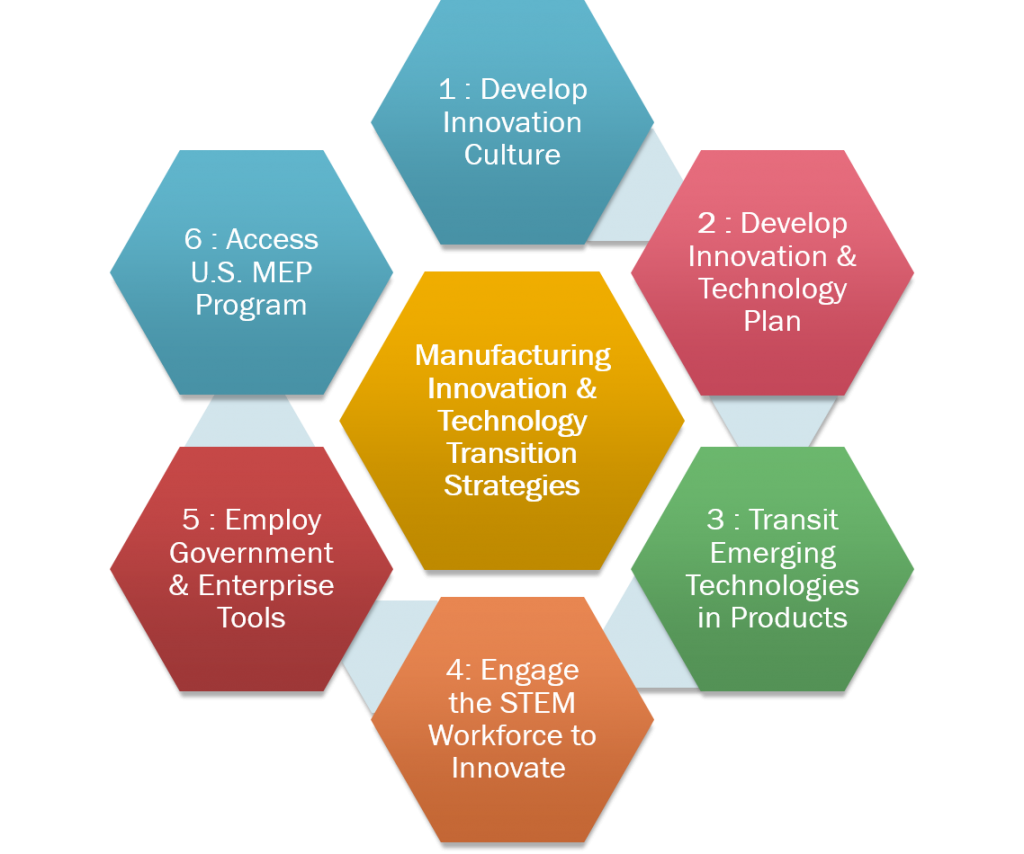Manufacturing Innovation and Technology Transition
October 3, 2014 is the Manufacturing Day – an annual celebration of manufacturing in North America. To celebrate this day, I would like to quote a statement from the latest United States Strategic Plan for Advanced Manufacturing. It states that “The acceleration of innovation for advanced manufacturing requires bridging a number of gaps in the present U.S. innovation system, particularly the gap between research and development (R&D) activities and the deployment of technological innovations in domestic production of goods.”
Due to lack of resources, the Small and Medium manufacturing Enterprises (SME) even face more challenges, and fail to transit emerging technologies in commercial products. If these issues are not mitigated, it may result in loss of markets, profitability, and even future viability. To mitigate these risks, the SME need to implement the following strategies.
1: Develop Innovation Culture: (a) Adopt a broader approach to R&D which also seeks innovations in Products-related Services, Processes and Execution strategies, and (b) Understand relationship between Innovation & Lean strategies.
2: Develop Innovation & Technology Plan: (a) Learn to leverage Government initiatives, (b) Scale Government, Academia and Enterprise R&D and Technology Management tools, and (c) Utilize a four-step process to develop the plan. These steps are – review user needs & technology opportunities; select critical elements for technology; conduct maturity analysis for the selected elements, and promote open innovation.
3: Transit Emerging Technologies in Commercial Products: (a) Learn to successfully transit R&D into Commercial Products, and (b) Conduct a CMMI® based Innovation Maturity Analysis to manage the process.
4: Engage the STEM Workforce to Innovate: Engage the Science, Technology, Engineering & Mathematics (STEM) professionals to innovate by teaching them the 21st century innovation enabling skills, such as innovation models, cross-disciplinary collaboration, innovation maturity analysis, and strategies to leverage the U.S. innovation ecosystem.
5: Employ well-established Government & Enterprise R&D and Emerging Technology Tools: These should include: (a) Aerospace & Defense sector’s Manufacturing Readiness Analysis (MRA) which measures the maturity of emerging technologies as they mature from R&D to Production, and (b) Gartner Group’s Technology Hype Cycle analysis which assists enterprises to develop emerging technology road maps.
6: Access the U.S. government’s Manufacturing Extension Partnership (MEP) Program: This program provides a range of complementary resources and services which may help the SME to implement above strategies.
# # #
